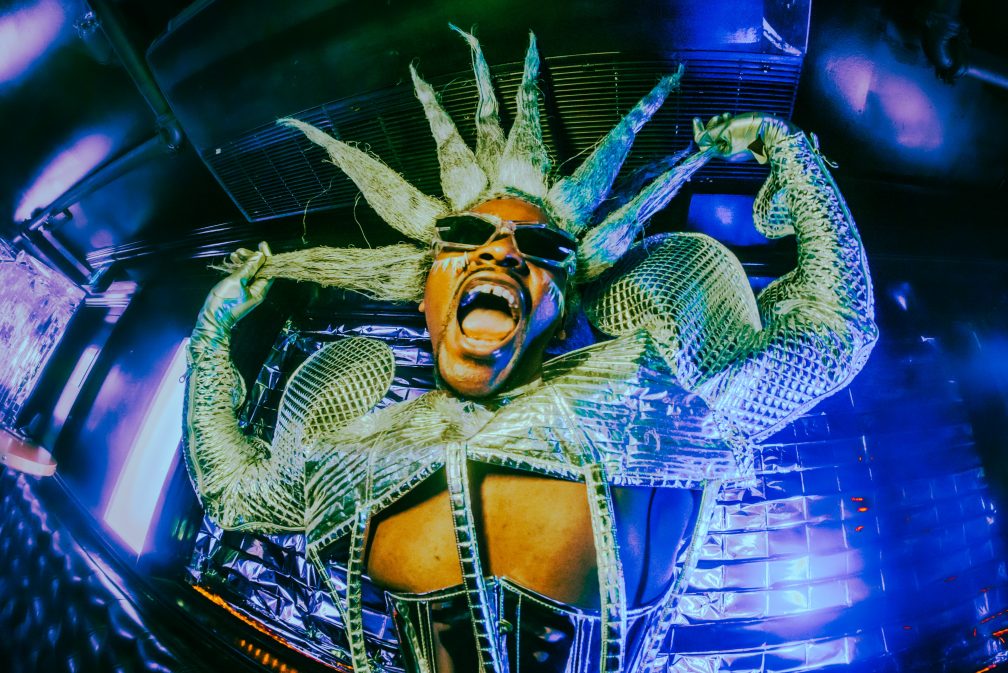 INTERVIEWS
INTERVIEWS
Photographer Spotlight: Ravyna Jassani & light as a character on the dance floor
The Eora-based photographer shares her thoughts on modern music photography.
In many ways dance and electronic music in 2024 feels like a visual experience as much as an auditory one. We’re regularly seeing festivals through the phone lenses of people we may have never even met, via uniformly framed live recordings, and of course in the near endless stories, diaries & ‘grwm’s of the artists we love.
The art of photography has, like the art of journalism, become part and parcel in the way we live our lives, and something that seemingly everyone has a decent knack for.
That’s why in this series, we’re focusing on the photographers who are responsible for accentuating & honing in on the most important parts of our national dance communities.
Ravyna Jassani (she/her) is an Eora-based photographer regularly catching herself between artists and crowds of hundreds and thousands. Her work is focused primarily on the spectacle of music, whether the flow of a performance or the reactions and faces of its audience.
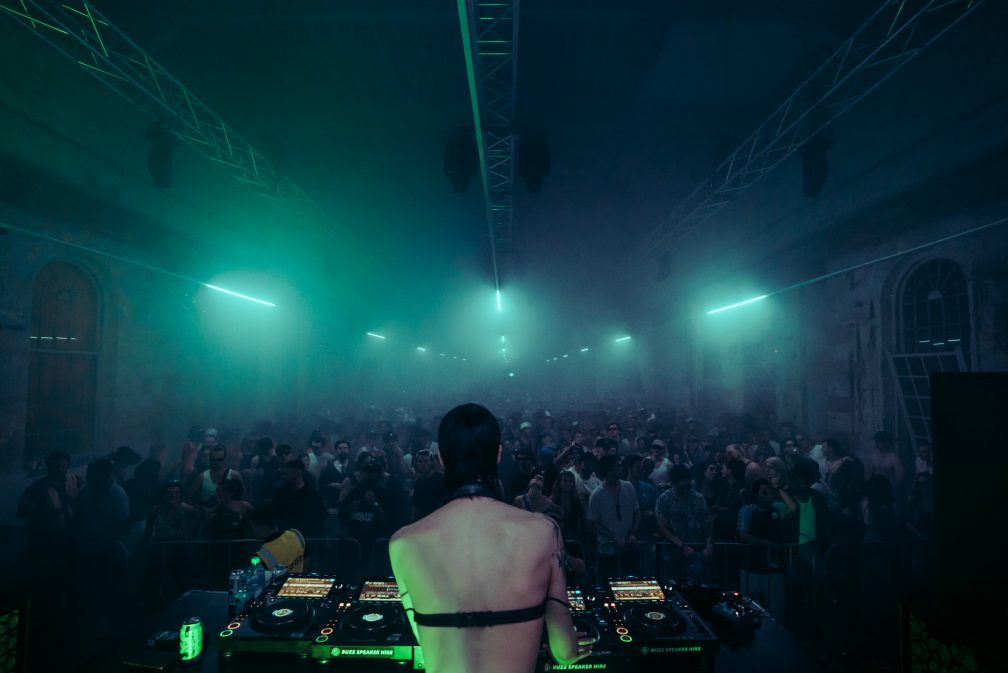
Q: Your photographs are regularly capturing light. Whether coming from a massive stage or being reflected on crowds. Why do you choose to hone in on these kinds of elements when you shoot?
RAVYNA: Lighting is everything, period. It’s constantly shifting, highlighting different moments—the performer, the crowd, or smaller, more intimate interactions. I love “following" the light to discover moments and to guide what I shoot. It’s ultimately lighting that informs the atmosphere and mood of the space, and sets the tone for my photos during the editing process. Big shout out to some of my favourite lighting designers here, Sam Whiteside and Blake Hull-moody—I owe some of my favourite photos I've taken to their incredible work!
Q: You shoot music of all kinds, but regularly come back to dance spaces. What is it that sets these spaces apart from others, musically?
RAVYNA: Everything feels less inhibited in dance spaces, as it's a more fluid, continuous experience. Unlike live music or large-scale events, which can feel more structured and artist-focused; dance music spaces (clubs, warehouses etc.) flow seamlessly with fewer interruptions, allowing people to fully immerse themselves. When it comes to shooting, it becomes less about the performance for me, and more about how people interact with one another and express themselves in the environment. I think this creates more unfiltered moments, and capturing these instances, along with the collective energy in these spaces is what keeps bringing me back.
Q: How does photographing dance music contrast with the rest of your photographic work?
RAVYNA: Photographing dance music is about working with what’s in front of me. There’s very little control—it’s unpredictable, and that’s a major part of the excitement when you do manage to get "the shot". I’ve become accustomed to this, and now usually enjoy the challenge of working with whatever conditions are thrown at me in these scenarios.
Recently, however, I’ve started practicing studio photography, doing press shots for DJs and artists, which has been a complete 180 from shooting events. In the studio, I have full control over how I want the final result to look. This requires much more preparation—from creating mood boards to shaping light and directing the subject. It can feel intimidating at times to have that level of creative freedom, but it’s also exciting to figure out what my style is and how I can channel what I’ve learnt from my time shooting dance music to this side of photography.
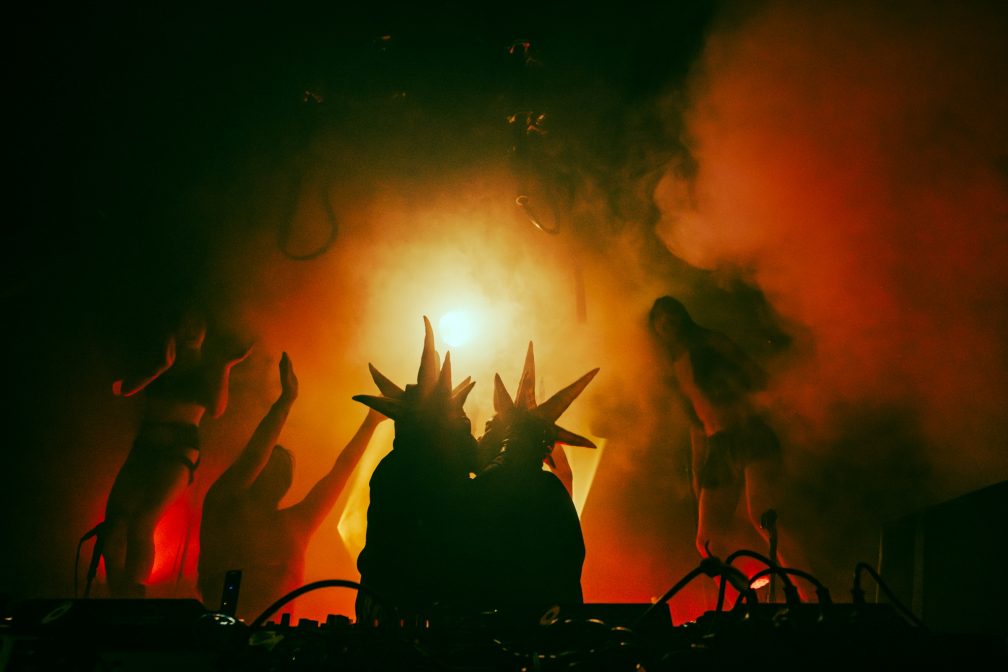
Q: You’re a professional photographer, which is an increasingly difficult job to secure I’m sure. When did you realise that this was something you wanted to turn into a career?
RAVYNA: It started out as a hobby and a freelance gig I did on the side, while I pursued and worked in architecture. There wasn't really a particular moment, but over time, as I built more connections and I started to get approached to do gigs (rather than solely the other way around), it started to feel more real and the work became a lot more consistent. That’s when it started to feel like it could be a real career path for me. However, I've never really liked sticking to just one thing, and as my photography career has grown, look for ways to apply my existing skills in new directions, which recently led me to explore the world of production and set design—a field that I think blends both my photography skills and architecture background in a very fulfilling way. I think keeping photography as only one part of my broader career is what's really helped me avoid burning out, and staying passionate about shooting.
Q: How do you feel that phone shot photos and video sit in how we understand or convey music-based experiences?
RAVYNA: With the way social media works today, there’s an emphasis on authentic and relatable content. So, when we’re trying to decide if an event is something we want to go to, I think most of us want to see genuine moments over polished, overly curated content. Phone content as a medium can be so great for this because it can show us events in almost real-time, giving us a sense of being there without all the fluff. It helps us feel like we can trust what we’re seeing and understand what the vibe of an event is really like, without it feeling like it’s being “sold” to us.
Q: You’re regularly shooting massive festivals. What do you think you’re able to capture that hasn’t been shown already?
RAVYNA: While i don’t think i’m doing something entirely new, capturing the large collective energy and mood of these festivals which is unique to events at this scale, is not always my sole focus at these events; I get drawn to the subtler moments—like cute interactions between friends and strangers, or people completely losing themselves in the music amid the massive crowds. It probably comes from wanting my photos to convey the energy of these events from the perspective of being right in the thick of it, so it gives people a real sense of what it was like to be there as an attendee, and to take them right back to that moment if they were there in person.
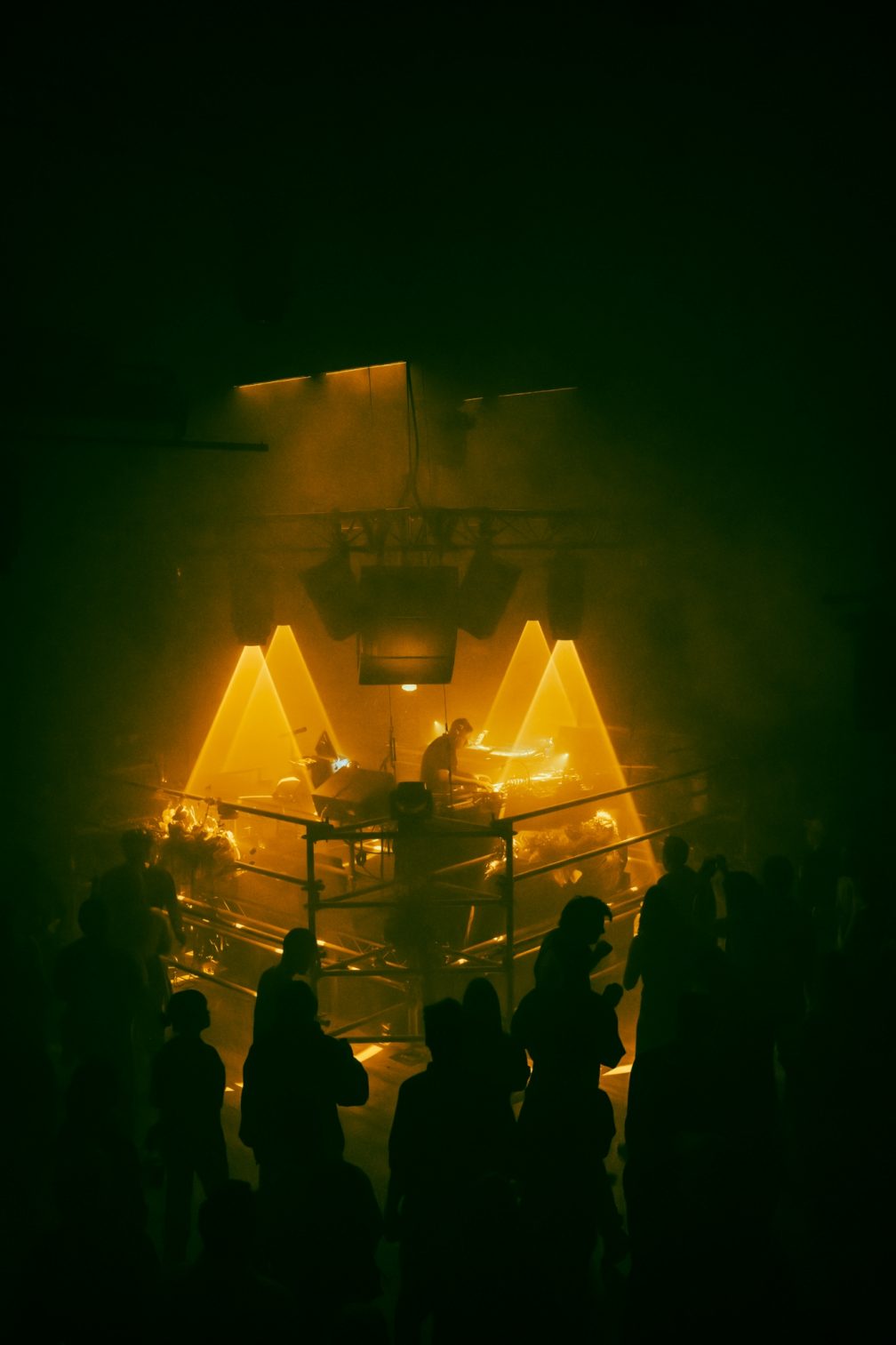
Q: Would you agree or disagree that photography is now synonymous with marketing? Why or why not?
RAVYNA: I’d agree with that—most events rely heavily on social media and other visual mediums for promotion, and I know that’s probably the main reason I get hired to shoot. Even when photography is focused on creativity, storytelling, or just documenting an experience, it can still serve as marketing. The lines between what’s for self expression vs. what’s for marketing feel very blurred at the moment, and I’d say any photo or video can ultimately promote something just by capturing it.
Q: Photography in dance spaces is a contentious issue. People are often told to “put their phones down”, with many spaces not even allowing photography. What’s your take on this consistently contentious issue?
RAVYNA: I’m all for people putting their phones down in these spaces so my shots don't get photobombed by someone else's phone screen haha—but on a real note, it definitely takes away from the experience of being in the moment. It makes people feel like they always have to be "on," which detracts from what dance culture is about. Spaces with a no-phone policy can feel liberating, and it’s probably much needed right now to have places where you’re encouraged to be fully present. The complete absence of documentation, including professional photography, can make the experience more special or sacred, and may allow a lot more people to truly "let go".
When I shoot in these spaces, I actively try to respect people’s boundaries and ensure they don’t feel like they’re being surveilled. I avoid using flash whenever possible (though it has its place) as it can feel disruptive and prefer to capture the environment “as is” and as candidly as I can. My favorite compliment is when someone tells me after an event, "I didn’t even know you were there.". I think in theory, for some events there could be a middle ground where a professional can still document the event (mindfully), while allowing people to stay fully immersed in the moment by having a no phones policy.
Q: Is photography the enemy of keeping something secure, safe & protected?
RAVYNA: It can be, but I don’t think it has to be—it comes down to how it’s done, as mentioned earlier, if done with respect for people’s boundaries, and without invading people's space or disrupting the vibe in these environments I don't think it's inherently harmful. Photography can serve as a way to preserve a tiny slice of history of these spaces, which are a huge part of many people’s lives but often sit on the periphery so there is little to no record of it. Having a visual record of those moments can be really meaningful. It also feels important to document these subcultures to highlight the value and beauty found in these spaces, showing what they mean to the people that are part of them—especially since they’re often misunderstood by those outside the culture.
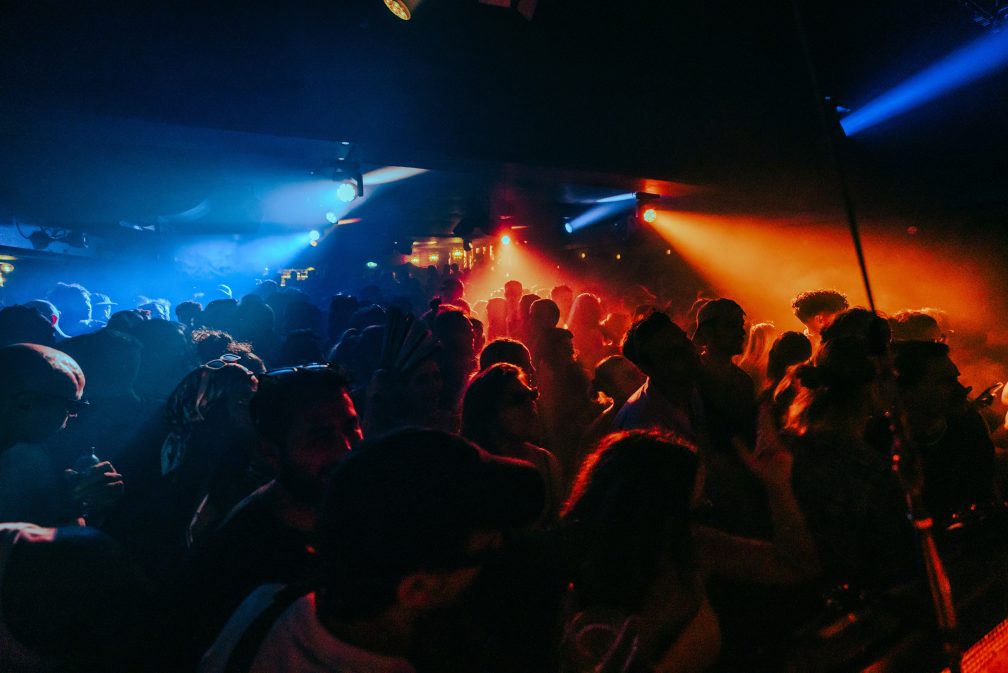
Q: What are some of the best gigs you’ve photographed, & why?
RAVYNA: There are so many! Sorry in advance, as I'm going to struggle to narrow it down and I will probably miss some. On a larger scale, Soft Centre's Unfurl Fest and Mode Fest stand out—not just for the lineup, but for their use of interesting architecture, unusual spaces, incredible production, and the artists they collaborate with. They create a really special environment and it always feels very immersive. Some of my favourite photos I've shot have come out from these events.
The studio parties at the Opera House during Vivid Sydney each year have also been a highlight to shoot. They consistently team up with great crews that bring an amazing crowd with good energy. The House of Mince parties held there are always a vibe, as they'll often have the House of Mince Angels roaming throughout the night, along with a couple of live performances, that make it really interactive and fun to shoot.
Carousel has also become one of my favourite clubs to shoot at since Goodbar closed its doors (RIP). The lighting is consistently great there, and it’s able to foster a similar energy that Goodbar once had, which was the place where I first started shooting dance music.
Working with my favourite crews also always guarantees it's going to be a great gig too as it feels less like work when it's with a fun, supportive crew. Many have been with me since the start of my photography journey and continue to trust me which I'm grateful for—Finely Tuned, Astral People, Bootz n Catz, Extract the Motion, Movement, Undisclosed, RAW to name a couple.
Q: We live in a world now almost entirely dominated by visual mediums. What do you think the future of photography looks like?
RAVYNA: With photography being so accessible to everyone now, I feel like there will be less emphasis on capturing things "as is", as we already have so many ways to document reality straightforwardly (i.e. with phones). Photography might be appreciated more as a creative art form, where it’s more about expressing each person’s creative vision and how they perceive moments and things around them. The revival of analog formats feels like a good example of this as they offer something different to the instant nature of digital photography, it also allows for more experimentation and creative accidents.
Q: What advice would you give to wannabe photographers?
RAVYNA: Photography’s more accessible than ever before, and the easiest way to build your portfolio is by working with the people and communities around you, and growing from there. I also don’t think it’s necessary to stress or focus on turning photography (or any passion) into a full-time gig right away. Without the pressure of relying on it as your sole income, it can help give you the freedom and space to experiment, grow, and level up; which can be very valuable in sustaining the passion.
-
View Ravyna’s work via Instagram or her website.
Jack Colquhoun is the Managing Editor for Mixmag Australia, follow him on Instagram.


